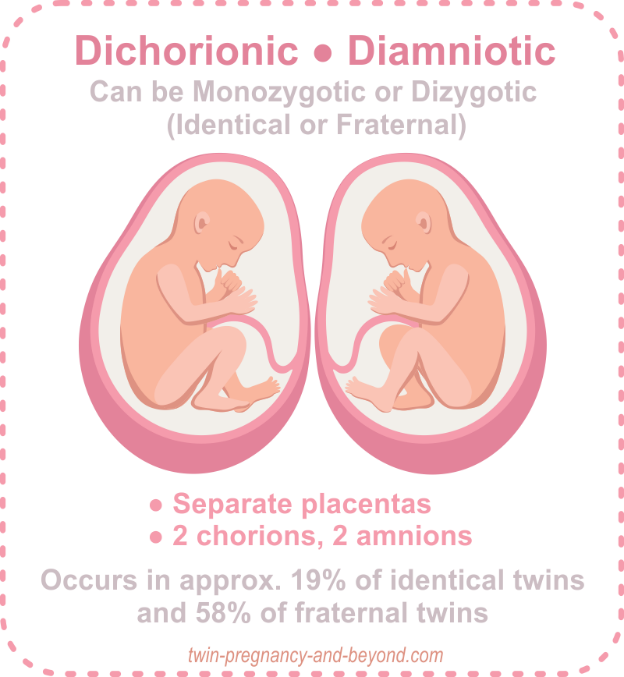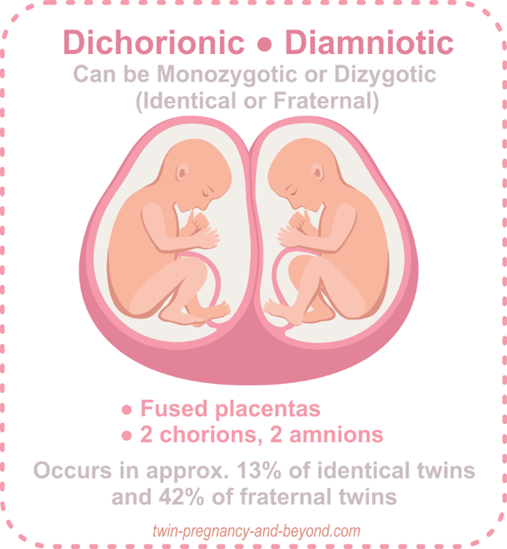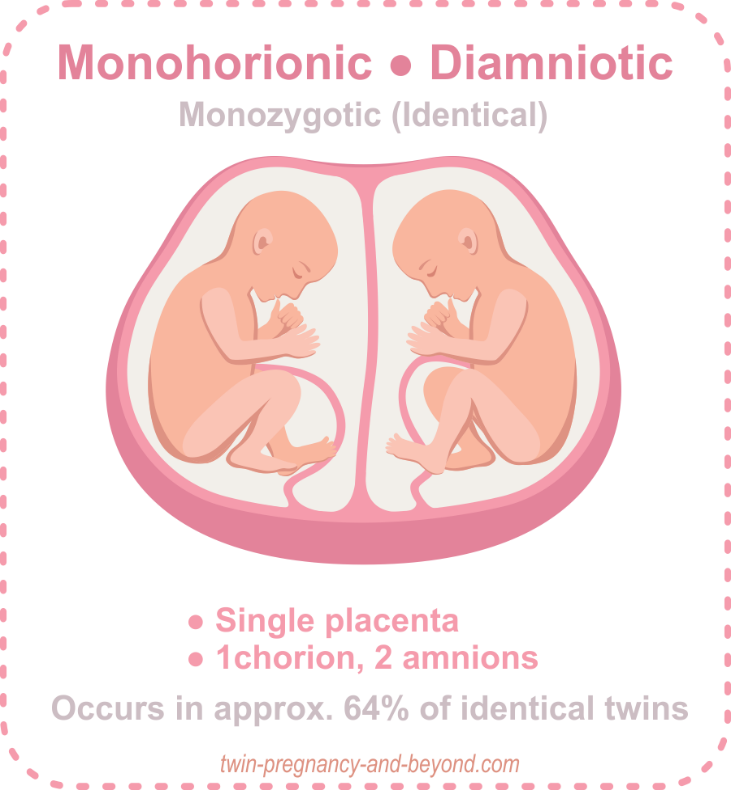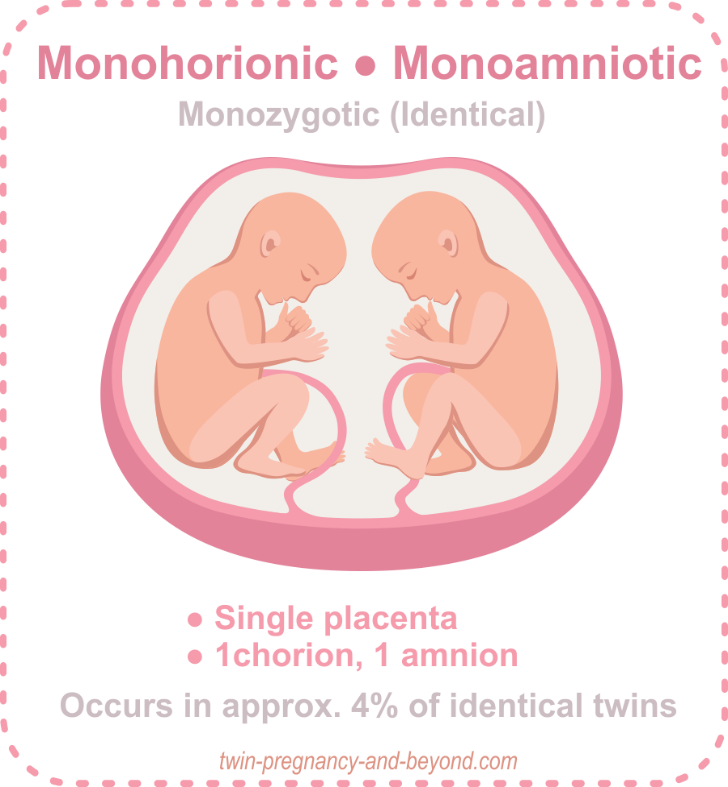toh
Twins


This term refers to a twin pair where each fetus has its own placenta and complete set of membranes. It most commonly arises from the fertilization of two separate maternal eggs, however in some cases, it can arise from a single egg that has split into two very early after fertilization. It is the most common type of twins, accounting for two thirds of all twins. Each fetus in a dichorionic twin pair is self-contained, each in its own environment and not subject to the same influences that monochorionic (MC) twins are. For example, they do not manifest connecting placental vessels between them and do not develop some of the specialized twin conditions that MC twins do, such as twin-twin transfusion (TTTS, TAPS, etc.). Uncomplicated Di-Di twins usually deliver slightly later in gestation than their MC counterparts (37-38 weeks). The outcome of uncomplicated Di Di twins usually approaches that of singletons.
 Monochorionic diamniotic twins represent approximately one third of all twin pairs. Both fetuses share a placenta and some blood vessels within the placenta. This enables several specialized twin conditions to arise where the circulations of both twins can become imbalanced, such as TTTS, TAPS and sIUGR. Whether these conditions arise depends on the nature, size and number of communicating vessels shared within the common placenta. Mono-Di twins are often referred to the twin Clinic at TOH for surveillance throughout pregnancy to rule out the presence of these problems. This generally requires ultrasound and clinic visits every two weeks. Delivery of uncomplicated Mono-Di twins occurs slightly earlier than with Di-Di twins (36-37 weeks).
Monochorionic diamniotic twins represent approximately one third of all twin pairs. Both fetuses share a placenta and some blood vessels within the placenta. This enables several specialized twin conditions to arise where the circulations of both twins can become imbalanced, such as TTTS, TAPS and sIUGR. Whether these conditions arise depends on the nature, size and number of communicating vessels shared within the common placenta. Mono-Di twins are often referred to the twin Clinic at TOH for surveillance throughout pregnancy to rule out the presence of these problems. This generally requires ultrasound and clinic visits every two weeks. Delivery of uncomplicated Mono-Di twins occurs slightly earlier than with Di-Di twins (36-37 weeks).
 In monoamniotic twins the fetuses share one placenta and are not separated by membranes. They are contained in one sac. In almost all cases, the umbilical cords of the babies become knotted or tangled, which can lead to fetal death. Before prenatal diagnosis of this condition was possible, the prognosis for monoamniotic twins was poor with only 50 % chance of survival of both twins. Fortunately, monoamniotic twins represent only about 1-2% of monochorionic twins. And although entangled umbilical cords are noted in almost antenatal ultrasound, not all these fetuses will be lost. Monitoring consists of intense fetal assessment using ultrasound, electronic fetal heart rate monitoring and early admission to hospital in the third trimester for enhanced surveillance. Early delivery by caesarean section is carried out around 33 weeks after administration of steroids to the mother to accelerate fetal lung maturity. As such, the survival rates have been greatly improved, approaching 90 %.
In monoamniotic twins the fetuses share one placenta and are not separated by membranes. They are contained in one sac. In almost all cases, the umbilical cords of the babies become knotted or tangled, which can lead to fetal death. Before prenatal diagnosis of this condition was possible, the prognosis for monoamniotic twins was poor with only 50 % chance of survival of both twins. Fortunately, monoamniotic twins represent only about 1-2% of monochorionic twins. And although entangled umbilical cords are noted in almost antenatal ultrasound, not all these fetuses will be lost. Monitoring consists of intense fetal assessment using ultrasound, electronic fetal heart rate monitoring and early admission to hospital in the third trimester for enhanced surveillance. Early delivery by caesarean section is carried out around 33 weeks after administration of steroids to the mother to accelerate fetal lung maturity. As such, the survival rates have been greatly improved, approaching 90 %.
Last updated on: April 29th, 2021


 To reset, hold the Ctrl key, then press 0.
To reset, hold the Ctrl key, then press 0.